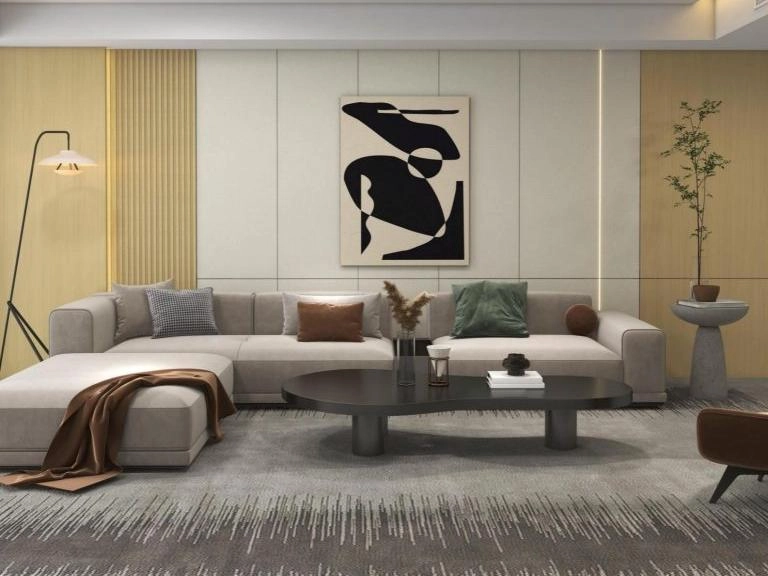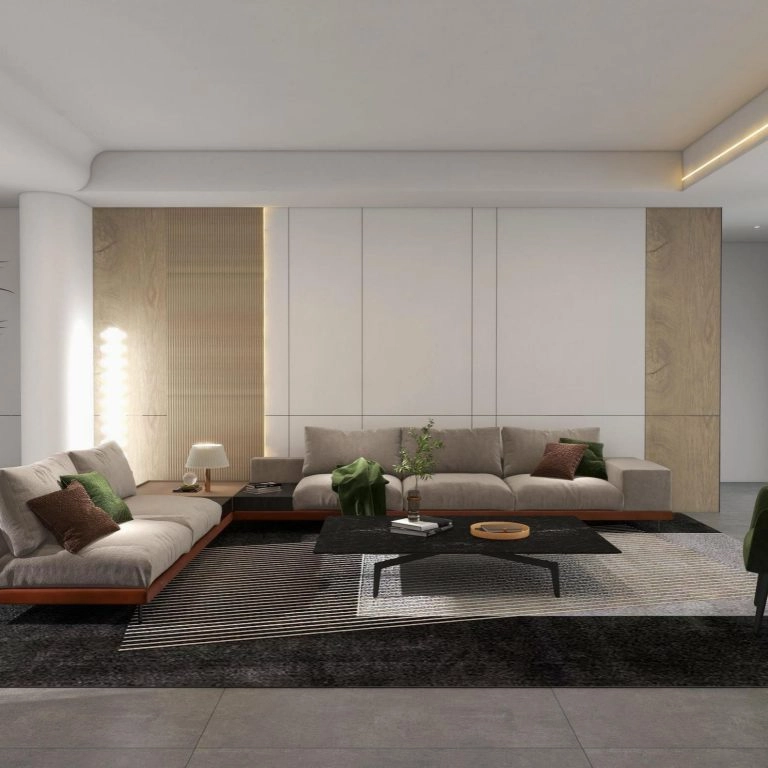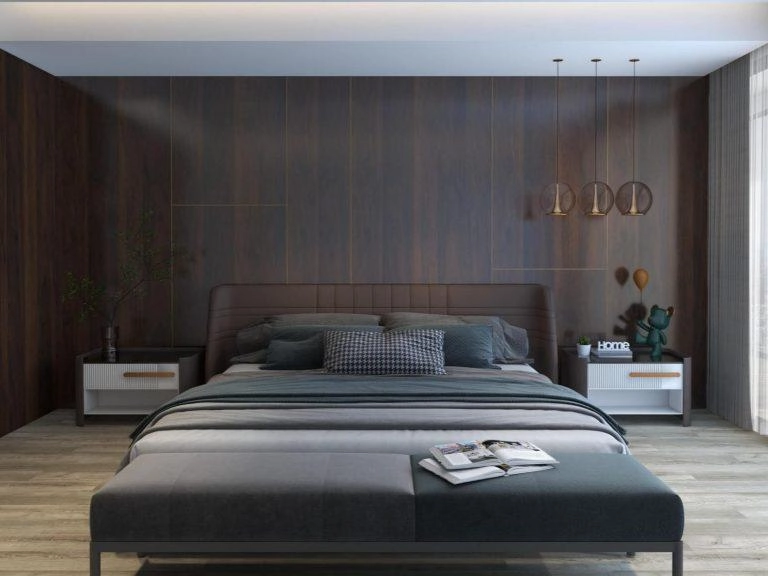Introduction — Why Eco-Friendliness Matters in Real Spaces
You can’t scroll far these days without hearing the word “sustainability.” It’s in every design brief, every project proposal.
Clients want things that look good, but also do less harm. And honestly, that’s fair.
For years, plastic-based materials had a bad rep. People heard “polymer” and thought “pollution.” Fair enough—cheap disposable plastics earned that reputation. But Wood Plastic Composite (WPC) wall boards belong to a different story.

They look like real wood, last for years, and save a surprising amount of natural resources in the process.
If you’ve walked into a hotel lobby or modern apartment with smooth, wood-grain walls that stay perfect through humidity and heat, chances are it’s WPC. It’s become a quiet favorite for designers who want warmth and texture without the maintenance burden of wood.
So, how green is it really? Let’s dig in—from materials and production to what happens after the panels have done their job.
What Exactly Are WPC Wall Boards?
Think of WPC services as a smart hybrid: recycled wood powder mixed with high-density plastic polymers and a touch of additives for stability and color.
The blend gets extruded under controlled heat, forming solid boards that look like timber but behave much better indoors.
They’re light, sturdy, water-resistant, and easy to install on walls, ceilings, or decorative claddings inside buildings.
Many contractors like them because they can be cut on site with simple tools—no complex finishing needed.
Designers appreciate that they come in many finishes: oak, ash gray, walnut, even matte white. That flexibility keeps spaces fresh without constant repainting.
How WPC Wall Boards Support a Greener Future
1. Using What We Already Have
The main ingredients come from leftovers—factory wood dust and recycled plastic.
Every panel made means less new timber cut and less plastic heading to landfills.
On average, each square meter of WPC wall board reuses nearly two kilos of waste material, which adds up quickly in large interior projects.
2. Lower Energy in Production
Manufacturing takes less power than milling and finishing solid wood.
Extrusion lines run at moderate heat, and waste pieces are simply re-ground and fed back into production.
One supplier I visited had almost no scrap bins—their system loops material back automatically.
That kind of process doesn’t just save energy; it keeps costs predictable for builders too.
3. Durable and Low Maintenance
Sustainability isn’t just about how something is made—it’s about whether it keeps up over time.
WPC wall panels handle daily wear surprisingly well. They don’t soak up moisture or start warping when the air gets heavy.
In damp spots like kitchens or bathrooms, they just… stay calm. No bubbles, no peeling edges, none of that headache you get with old plywood.
I’ve walked into offices that installed WPC years ago, and the walls still look like they were done last season.
There’s no paint smell, no need for sealing or sanding—just the occasional wipe-down when dust collects.
That’s the quiet kind of sustainability most people forget: stuff that doesn’t ask for constant fixing.

4. Smaller Carbon Footprint
Because the panels are lighter than solid wood, shipping them burns less fuel.
And since they last longer, you’re not ordering new ones every few years—less packaging, less factory time, fewer trucks on the road.
It’s a chain reaction that saves more energy than you’d expect.
Some lifecycle studies peg the total carbon savings somewhere around 30–40% compared to natural wood wall panels used indoors.
Numbers aside, the logic’s simple: the less you replace, the less you produce. And that’s what really cuts emissions.
5. Protecting Forests and Indoor Air
Every WPC panel means fewer logs on the truck and a few more trees left standing.
They reuse recycled wood fibers instead of fresh lumber, easing pressure on forests that take decades to grow back.
And here’s another plus—no harsh formaldehyde or benzene smell hanging in the air.
The better brands follow E0 or low-VOC standards, which is fancy talk for “you can breathe easy.”
If you’ve ever opened a pack of cheap laminate and caught that sharp glue odor, you’ll instantly get the difference.
These panels don’t just look clean—they are clean, for both the planet and the room you’re standing in.
6. Helping Buildings Save Energy
These panels have mild insulating and sound-absorbing qualities.
In climate-controlled spaces like offices or hotels, that can trim heating and cooling costs by about 25%.
They also help soften echo, which makes rooms feel calmer—an underrated environmental bonus.
WPC vs Natural Wood: A Real Comparison
| Feature | WPC Wall Boards | Natural Wood Panels |
|---|---|---|
| Material Source | Recycled wood + plastic | Fresh timber |
| Durability | Resistant to moisture, insects, rot | Needs constant protection |
| Maintenance | Simple cleaning only | Regular sanding, painting |
| Carbon Impact | Lower CO₂ footprint | High impact, deforestation |
Wood looks charming, but WPC keeps that charm with less upkeep and a smaller footprint—especially for interiors.
End-of-Life Recycling and Reuse
When their time is up, WPC wall boards don’t go to waste.
They can be shredded and re-molded into new panels or similar products.
No toxic coatings, no lead stabilizers to worry about.
A few manufacturers already run recycling and take-back programs for old panels, turning them back into fresh material batches.
That’s a small but real step toward a circular economy—something the construction world badly needs.
How to Find Eco-Friendly WPC Wall Boards
1. Research Online
Look for verified producers who list their material sources and environmental certifications—ISO 9001, ISO 14001, etc.
Check real factory photos, not just glossy stock images.
2. Visit a Distributor or Showroom
If possible, feel the surface texture. The difference between cheap shiny panels and quality matte finishes is obvious in person.
A good salesperson will explain blend ratios and warranty terms clearly.
3. Compare Responsibly
Online marketplaces have plenty of “eco” claims.
If something is priced far below everyone else, ask why. Real sustainability has a cost—but also long-term savings.

A Note on Responsible Brands
One supplier known for consistent quality is Latitude, which follows ISO, CE, and REACH standards with ODM/OEM service.
We have replaced toxic lead stabilizers with safer calcium-zinc systems and keep production free from heavy metals.
Latitude also makes design-driven finishes—wood grain, brushed metallic, even fabric-textured panels—mainly for indoor commercial or residential interiors.
It’s the kind of product line that blends aesthetics with solid environmental responsibility.
Conclusion — Building a Greener Future Indoors
No material is perfect, but WPC wall boards come close to a smart balance: they reuse waste, last decades, and cut carbon output without sacrificing design.
They’re made for indoor applications, giving warmth and texture to modern spaces while keeping the footprint low.
So next time you think about renovating, maybe start with the wall itself—it’s a small change that makes the whole space feel more sustainable.
FAQs
Q: Can WPC wall boards be recycled?
A: Yes. Most can be shredded and reused to make new boards. Some manufacturers even take back used ones for recycling.
Q: Are WPC wall boards suitable for outdoor walls?
A: No. WPC wall boards are designed for indoor or semi-sheltered spaces only. For open outdoor use, look for dedicated WPC decking or exterior-grade panels.
Q: How long do WPC wall boards last indoors?
A: Typically 20–25 years, depending on humidity and installation quality.




